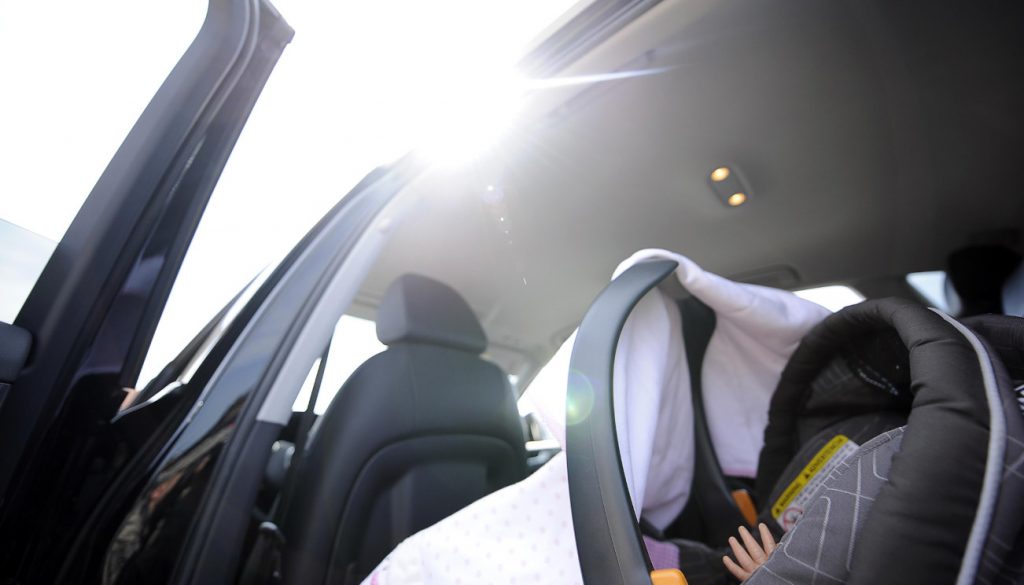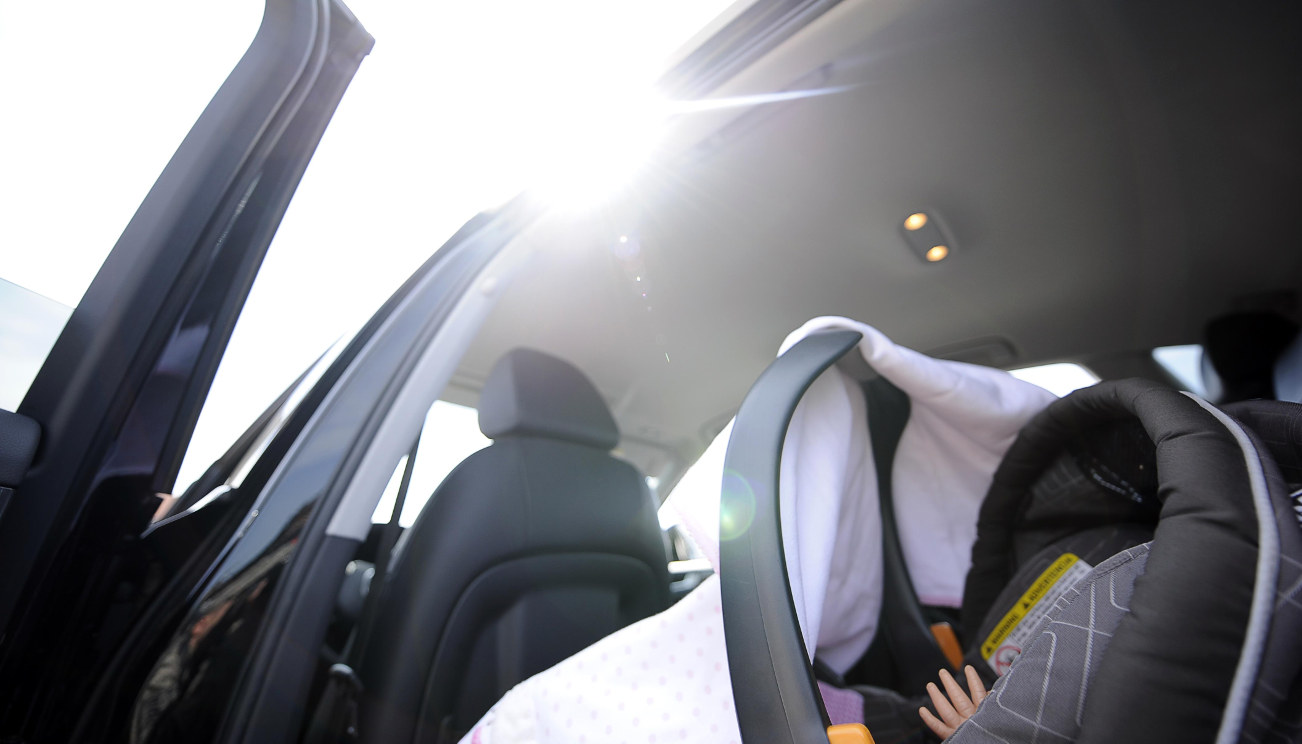Atlanta, USA (ViaNews) – Sirens blaring, a parent frantically screaming in desperation, an unresponsive child pulled from a vehicle whose temperatures soar in excess of 100 degrees, the faces of the bystanders, police and EMTs are downcast with grief as they realize it is much too late to save this little one. Many of the gathered bystanders stare at the caregiver, not in sympathy but with accusations of blame shooting darts at the grieving parent.
Another innocent life, much too little and much too young, taken much too soon. Technically, the cause of death will be listed as vehicular heat stroke and hyperthermia, but it is the actions that led up to the death where the much-debated controversy begins. Was this precious life lost because the parent made a life-altering mistake; Because the parent had a momentary memory lapse, forgetting their child’s location in the rush to get their busy day started? Or did the caregiver wish to be free of all parental responsibility and therefore, purposely trapping their own flesh and blood, the child that trusts them explicably, whom they should protect with their life, inside of a vehicle with the sole intention of causing the child’s death?
This scene plays out too often in the United States. Between 1999 and 2017, 740 children have fallen victim to hot car related deaths, which is an average of 37 children each year who fall victim to fatal heat strokes and hyperthermia from being left in an automobile. June, July and August are the three months with the highest death rates, in part due to these months having the hottest temperatures of the year in the United States. However, hot car related deaths can occur any month out of the year. It is important to remember that it is the temperature inside the car that becomes a danger to a child locked inside of it, not the external temperature.
Rich or poor, black or white, time of the year, city or country, these variables make little difference. Hot car deaths can happen anytime, anyplace to anyone. Especially when the caregiver knowingly straps a child they are responsible for, inside of a car seat, secures the car seat inside of their vehicle and at some point, walks away, leaving all the windows completely closed, doors shut and ignition in the off position. Unfortunately, the thin line between intentional and unintentional when referring to hot car deaths is so thin it borders on transparent and in many cases, this line is almost as invisible and imaginary as the equator itself.

According to the nonprofit child-safety group KidsAndCars.org, between 1968 and 2013, over 500 hot car deaths occurred, with 60% of these cases resulting in charges against the adult deemed responsible for leaving the child in the vehicle. These charges ranged from child neglect and abuse to negligent homicide and murder. 30% of these cases yielded no charges. However, many of these charges did not stem from intent but instead simply from the belief that no responsible adult would forget their child in a car for hours on end, especially to the result of causing his or her death.
According to Dr. David Diamond, a professor of psychology at the University of South Florida, the controversial media coined term “Forgotten Baby Syndrome” is a very real psychological phenomenon. Dr. Diamond has spent recent years studying the science behind this phenomenon, concluding that the principals behind “Forgotten Baby Syndrome” are, in fact, very real conditions. “Given the right scenario, I would say this can happen to anyone,” says Diamond. “It has nothing to do with how much parents love their kids. It is, to me, a tragic way of learning how the brain works.” He believes this is due to the ever-constant competing factors in a parent’s brain, similar to when someone makes plans for the future, yet with all the other comings and goings of life are in play, these plans are forgotten.
Dr. Diamond’s research centers on the different parts of the brain and their independent functions. The brain center, known as the basal ganglia in the scientific world, is the part of our brains that allows us to go through certain motions without thinking about it, such as riding a bike or keeping our normal daily routines, such as driving to or from work. The hippocampus functions entirely on a conscious level and working with the frontal cortex, allows us to process new information and make future plans. These three parts of the brain often work against each other, with the brain center usually winning out as it overrides any new information the hippocampus may take in.
In an interview with NBC News, Dr. Diamond states, “In the case of you driving home, your basal ganglia wants to get you from Point A to Point B to the point it can suppress your hippocampus. [People] say you can forget to stop at the store, but you don’t forget your child is in the car. I get that feeling completely. I get that argument, but you can’t argue with brain function.” In layman’s terms, your basal ganglia runs on autopilot, instructing you to drive home as you do every single day. When a change to that routine comes about, such as dropping your child off before going home, this new information is stored in the hippocampus. Because the basal ganglia, or brain center, works on a subconscious level and often suppresses the hippocampus, it causes the parent to lose any new information recently stored there and in this case, resulting in a forgotten child left in a hot car. According to Dr. Diamond, it is no different than forgetting to grab that gallon of milk your wife asked you to get or to get gas on your way home as your car was on empty. If it is outside of a normal routine, which is programmed into the brain center, it can be forgotten.
An example of this phenomenon is the case of Jeff and Mary Parks and their 23-month-old son, Juan of Blacksburg, Virginia. Mary, an accountant, and Jeff, a research scientist, did everything right, according to today’s standards. They were established in their careers with a nice, spacious home in Blacksburg when they chose to adopt their first son, Byron, from Guatemala. Two years later, the couple decided to expand their family and again chose to adopt from Guatemala, this time welcoming Juan into their family. In August and into the first of September of 2007, Bryon, now 4 years old, and Juan, 23 months old, had been battling one illness after the other it seemed. For Jeff and Mary, the last few weeks seemed to roll into one blur between work and sick babies. Normally, it was Mary who took on the child-caregiver role, staying home whenever one or the other child was sick while her husband made the daycare drop off on his way to work. But on September 7th, it was Jeff who found himself staying home with a sick Bryon while Mary went on into work, planning to drop off Juan at daycare on the way. Mary, having been up all night with a feverish Byron, made her way on to work as normal. She went through her normal day to day tasks as an account, even taking a moment to mention to her supervisor that she may need to leave early because the daycare center may call her to pick up Juan, as both boys had been sick off and on. As her day drew to a close, Mary proceeded to her car, drove to the local supermarket to grab a few things for supper and then, stopped by the daycare center to pick up Juan. She had no doubt she had dropped off her toddler that morning before work, until Juan’s teacher insisted he had never shown up that day.
Instantly Mary realized what she had done. But it was too late. Despite Mary’s desperate pleas for her baby to wake up and despite the resuscitation efforts made by a daycare staff member as well as the EMT who arrived after the 911 call was placed, Juan was already gone. His death was ruled an accidental heatstroke. This is a clear example of Forgotten Baby Syndrome and why Mary went as far as to pick Juan up from daycare. Her basal ganglia, or brain center, was programmed to function one of two ways: when one of her children was sick, she stayed home with the sick child or she dropped two healthy children off at daycare and went to work. The change in her routine, knowing a sick Byron was home sick combined with Juan falling asleep in his car seat, allowed Mary to subconsciously drive straight on into work. Charges were not filed in this case.
In contrast to the case above is the case of 22-month-old Cooper Harris of Marietta, Georgia. Cooper was the son of 34-year-old Justin “Ross” Harris and Leanna Taylor Harris. On July 18, 2014, Harris loaded his son into his rear-facing car seat in the back of his Hyundai Tucson SUV and left out for his job as a web developer for the corporate headquarters of The Home Depot, with the intention of dropping Cooper off at daycare on the way. Security cameras at a Chic-Fil-A restaurant located about half of a mile from Harris’ office show the father and son enjoying breakfast together, time-stamped at 8:57 AM. Shortly after, they then exit the restaurant, with Cooper alert and chattering as the two leave. At 9:25 AM, Harris arrives at The Home Depot location where he is employed and enters the building alone. Around 12:45 PM, after eating lunch with two co-workers at a nearby Publix and visiting a different Home Depot location to purchase light bulbs, Harris returns to his SUV and places the newly purchased lightbulbs in the passenger seat before returning to his office. At 4:16 PM, Harris enters the SUV once more, this time to head home from work. However, just seven miles down the road, Harris pulls into a shopping center’s parking lot, exiting the vehicle and screaming for help, as he pulls a lifeless Cooper from his car seat. Harris’ screams alert several bystanders, some call 911 while others try to assist the father in administering aid to the toddler. Just like in the case of Juan Parks, it was too later for little Cooper. His death was ultimately caused by a heatstroke brought on by seven hours in a scorching hot car.
The Harris case now takes a very different turn than the Parks case. Two months after the death of his son, on September 4, 2014, Justin Ross Harris was indicted by the grand jury for the murder of his son. Harris was charged with two counts of felony murder, malice murder, cruelty to children in the first degree, cruelty to children in the second degree, criminal attempt to commit a felony and due to evidence gathered that he had sent indecent photos via text to a 16-year-old female, he was also charged with two counts of sexual exploitation of children and six counts of disseminating harmful material to a minor. Harris’ trial began October 3, 2016. On November 16, 2016, Harris was found guilty of all charges and ultimately sentenced to life in prison plus 34 additional years. Many feel Harris was railroaded, with petitions containing thousands of signatures requesting his sentence and all charges be dismissed and even his ex-wife, mother of Cooper, testified on his behalf that he was a loving, doting father who was focused on getting to work and simply forgot his son was strapped in the backseat.
Despite this, there are many more, including a jury of 12, who believe the evidence points to intentionally leaving his innocent child strapped into a rear-facing car seat Cooper had long since outgrown, which was positioned a mere 3 inches from the driver seat of the SUV, for seven long hours in the sweltering heat of a Georgia summer. Unlike the Parks’ case where Mary was breaking her normal routine to go into work when her child was sick thus dropping off only one child at daycare, the prosecution presented evidence that it was part of Harris’ normal routine to take Cooper to daycare a few times each week and the two had a tradition of visiting that same Chic-Fil-A for breakfast a couple of times each month before Harris would drive Cooper to daycare then go into work. The prosecution measured both the distance from the restaurant to Harris’ office in both length and time, which showed his office was around .06 of a mile from the Chic-Fil-A restaurant and took between 30-40 seconds to get from one to the other. The security cameras showed alert Cooper as the two exited the restaurant. This meant two important things: Cooper could not have fallen asleep in the 30 to 40 seconds it took to get to Harris’ job, meaning he was awake and likely moving and/or babbling as almost 2-year-old’s do when Harris walked away from the closed SUV that day. As well as the fact that, in the very unlikely scenario that Cooper had fallen completely still and silent or even asleep in half a minute, this would mean it took Harris less than a minute to forget the son he was enjoying breakfast with moments before. Computer data from Harris’ personal computer also showed he has specifically researched “how long does it take to die in a hot car” prior to the death of his son. Plus, we must consider that 12:45 PM trip to the SUV, while Cooper laying dying or dead only 3 inches from where Harris stood to place the lightbulbs in the seat. Also among the evidence, was proof Harris was maintaining several extramarital affairs, including having sexually explicit text conversations with the 16-year-old mentioned above. Harris had made comments to these women via text, internet chats and social media posts about needing to escape being a husband and father, among other incriminating statements.
This is not all the evidence against Harris but some of the most crucial. Is it enough to prove intention murder via hot car? Or is it simply circumstantial evidence that has very simple explanations, yet the need to place the blame on someone anytime a child dies in a seemingly accidental manner? There is no one for all answer on the hot car death controversy; There is no yes or no answer when distinguishing between intentional and accidental.
As with the Parks’ case and many others, the auto-pilot we normally operate under overpowers the new change in the routine and the quiet child in the back is tragically forgotten which leads to a devastating accident. Then there are cases such as the terrible case of baby Cooper Harris, whose own father was convicted of his murder via hot car. There is an overwhelming amount of evidence that clearly indicates that Harris taking Cooper to eat and then to daycare was often part of his normal routine, in the half of a minute trip from pulling out of the restaurant immediately after buckling his son in his car seat to walking away from his SUV with his son still trapped in the back at his place of employment, Harris was in the process of killing his only child, the only thing left to do was to wait until enough time had passed to ensure Cooper’s death. The same exact outcome- the loss of a child- with the same exact cause of death- heat stroke and hyperthermia via a hot automobile. Two very different circumstances leading to this death, one accidental, one intentional.
Unfortunately, there is no right or wrong answer to this debate. It seems there will always be both types of cases, intentional and accidental, and only the circumstances around specific cases will determine the truth. However, with the recent invention of both car seat and automobile alarms that signal when a child is in the vehicle, hopefully, the answer to the hot car death controversy will be an end to all deaths relating to this cause. One can only hope.




